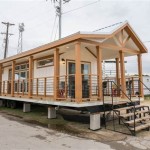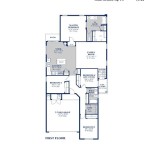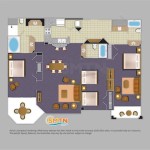Best Bedroom Fan For Sleeping: A Comprehensive Guide to Restful Nights
Achieving optimal sleep quality necessitates a conducive environment. Temperature regulation plays a crucial role in this regard. A strategically chosen bedroom fan can significantly enhance sleep by promoting air circulation, reducing humidity, and generating white noise that masks disruptive sounds. However, with a plethora of options available, selecting the ideal fan requires careful consideration of various factors. This article provides a comprehensive overview of the key aspects to evaluate when choosing the best bedroom fan for sleeping.
1. Types of Bedroom Fans and Their Suitability for Sleep
The market offers a variety of fan types, each with unique features and suitability for different sleep preferences. Understanding these distinctions is paramount in making an informed decision. Several common types of fans are frequently implemented within bedrooms and offer their own distinct advantages.
Box Fans: These fans are characterized by their simple design and affordability. Typically rectangular, they draw air through a large grille and expel it in a concentrated stream. Box fans are effective at circulating air within a room and can be placed in windows to draw in cooler outside air. However, they generally operate at a higher noise level compared to other fan types, which might be disruptive for light sleepers. Their airflow tends to be more directional, potentially causing discomfort if directed straight at the sleeper. Furthermore, their lack of advanced features, such as timers or remote controls, can limit their convenience.
Tower Fans: Tower fans feature a vertical, space-saving design. They utilize a rotating cylindrical fan to generate airflow. Tower fans are often lauded for their sleek aesthetics and quiet operation. Many models include multiple speed settings, oscillation features (allowing the fan to sweep back and forth), and programmable timers. They are typically more energy-efficient than box fans and offer a wider distribution of airflow, reducing the risk of localized discomfort. The compact footprint of tower fans makes them suitable for smaller bedrooms.
Pedestal Fans: Pedestal fans are characterized by their adjustable height and oscillating head. They consist of a fan blade encased in a protective grille, mounted on a pole that can be raised or lowered. Pedestal fans offer a good balance of airflow and adjustability. The oscillating feature allows for widespread air circulation, while the adjustable height enables the user to direct airflow to the desired level. Pedestal fans are generally more powerful than tower fans but may also generate slightly more noise. They are a versatile option suitable for medium to large bedrooms.
Ceiling Fans: Ceiling fans are permanently mounted to the ceiling and typically feature multiple blades that rotate to circulate air. Ceiling fans are highly effective at cooling larger rooms and can be used year-round to improve air circulation. Many modern ceiling fans include a reverse function, which allows them to push warm air down in the winter, improving heating efficiency. Ceiling fans are generally quiet and offer a discreet cooling solution. However, installation requires professional expertise, and they are not easily portable.
Table Fans: Table fans are small, portable fans designed for personal cooling. They are typically placed on a desk or bedside table to provide a localized stream of air. Table fans are ideal for individuals who only need cooling in a specific area. They are often very quiet and energy-efficient, making them a good option for light sleepers. However, their limited airflow makes them unsuitable for cooling an entire room.
2. Key Features to Consider for Optimal Sleep
Beyond the fan type, specific features can significantly impact the fan's suitability for bedroom use and sleep quality. Prioritizing certain characteristics can ensure a more comfortable and restful sleep environment. Before purchasing a fan it is important to research and understand features that will aid an individual in improving their sleep.
Noise Level: Noise is a crucial factor to consider, especially for light sleepers. Fans generate noise due to motor operation and airflow. It is advisable to look for fans with a low decibel (dB) rating, ideally below 40 dB on the lowest setting. Many manufacturers now specify the noise level of their fans. Some fans offer a "sleep mode" which further reduces the fan speed and noise output. Opting for brushless motors can greatly reduce mechanical noise as well. Reading customer reviews provides valuable insights into the real-world noise levels of different fan models.
Airflow and Speed Settings: Adequate airflow is essential for effective cooling and ventilation. The fan should provide sufficient airflow for the size of the room. Multiple speed settings allow the user to adjust the airflow intensity to their preference. Some fans also include a variable speed control, offering even finer adjustments. Consider the size of the room when evaluating the fan's airflow capacity, typically measured in cubic feet per minute (CFM). For smaller bedrooms, a fan with lower CFM may suffice, while larger rooms require a fan with higher CFM.
Oscillation: Oscillation refers to the fan's ability to rotate from side to side, distributing airflow across a wider area. Oscillation can prevent discomfort caused by concentrated airflow and promote more even cooling throughout the room. Some fans offer adjustable oscillation angles, allowing users to customize the coverage area. However, some individuals may find the constant motion of an oscillating fan distracting, so it is important to consider personal preference.
Timer Function: A timer function allows the user to set the fan to automatically turn off after a specified period. This feature can be useful for conserving energy and preventing the fan from running unnecessarily throughout the night. It is particularly helpful for those who only need the fan for a portion of their sleep cycle. Some fans offer multiple timer settings, providing greater flexibility.
Remote Control: A remote control provides convenient access to the fan's settings from the bed, eliminating the need to get up to adjust the speed, oscillation, or timer. This feature is particularly beneficial for individuals with mobility issues or those who prefer to minimize disturbances during the night.
Air Filtration: Certain bedroom fans are equipped with air filters that remove dust, pollen, and other allergens from the air. These fans can be especially beneficial for individuals with allergies or respiratory sensitivities. HEPA filters are particularly effective at capturing fine particles. Ensure that the filters are easily accessible and replaceable to maintain optimal air filtration performance.
3. Safety and Maintenance Considerations
Ensuring the safe operation and longevity of a bedroom fan entails several important considerations. Overlooking these aspects can lead to potential hazards and reduced fan performance. Safety and maintenance are crucial for lasting functionality of any fan.
Safety Features: Fans should be equipped with safety features such as a stable base to prevent tipping, a securely fastened grille to protect fingers from the blades, and overheat protection to prevent motor failure. Look for fans that are certified by reputable safety organizations such as UL or ETL. Regular inspection of the power cord for damage is also essential.
Cleaning and Maintenance: Regular cleaning of the fan blades and grille is crucial to maintain optimal airflow and prevent the accumulation of dust and allergens. Unplug the fan before cleaning and use a soft cloth or brush to remove dust and debris. Some fans have removable grilles, making cleaning easier. Periodic lubrication of the motor may also be required, depending on the fan type. Consult the manufacturer's instructions for specific cleaning and maintenance recommendations.
Placement: Proper fan placement can maximize its effectiveness and minimize potential hazards. Ensure that the fan is placed on a level surface and away from flammable materials. Avoid placing the fan in areas where it could be easily knocked over. For ceiling fans, ensure that they are properly installed and have sufficient clearance from the ceiling and any surrounding objects.
By carefully considering the type of fan, key features, safety precautions, and maintenance requirements, you can select the best bedroom fan for your individual needs and preferences, ultimately contributing to a more restful and refreshing sleep experience. Investing time and effort into researching various options and reading honest reviews is paramount. Furthermore, paying attention to warranties and customer service policies can provide additional peace of mind.

12 Best Quiet Fans For The Bedroom 2025 Tried And Tested

Best Fan For Bedroom Cool Quiet Sleep Posh Living Magazine

Best Ceiling Fans For Bedrooms Choice

The 5 Best Fans Of 2025 Reviews By Wirecutter

Desk Fan For Bedroom 23db Quiet Air Circulator Sleep With Ebay

Best Bedroom Fans From 12 To Beat The Heat At Night Mirror

The 13 Best Fans For Coolest Summer 2025 Wired

Eoy A Good Night S Sleep With The Best Silent Ceiling Fans Crompton

5 Best Quiet Fans Cooling Powerful 2025 Review

The Best Quiet Fans For Your Bedroom Sleep Soundly With These Top Picks Pad Magazine








